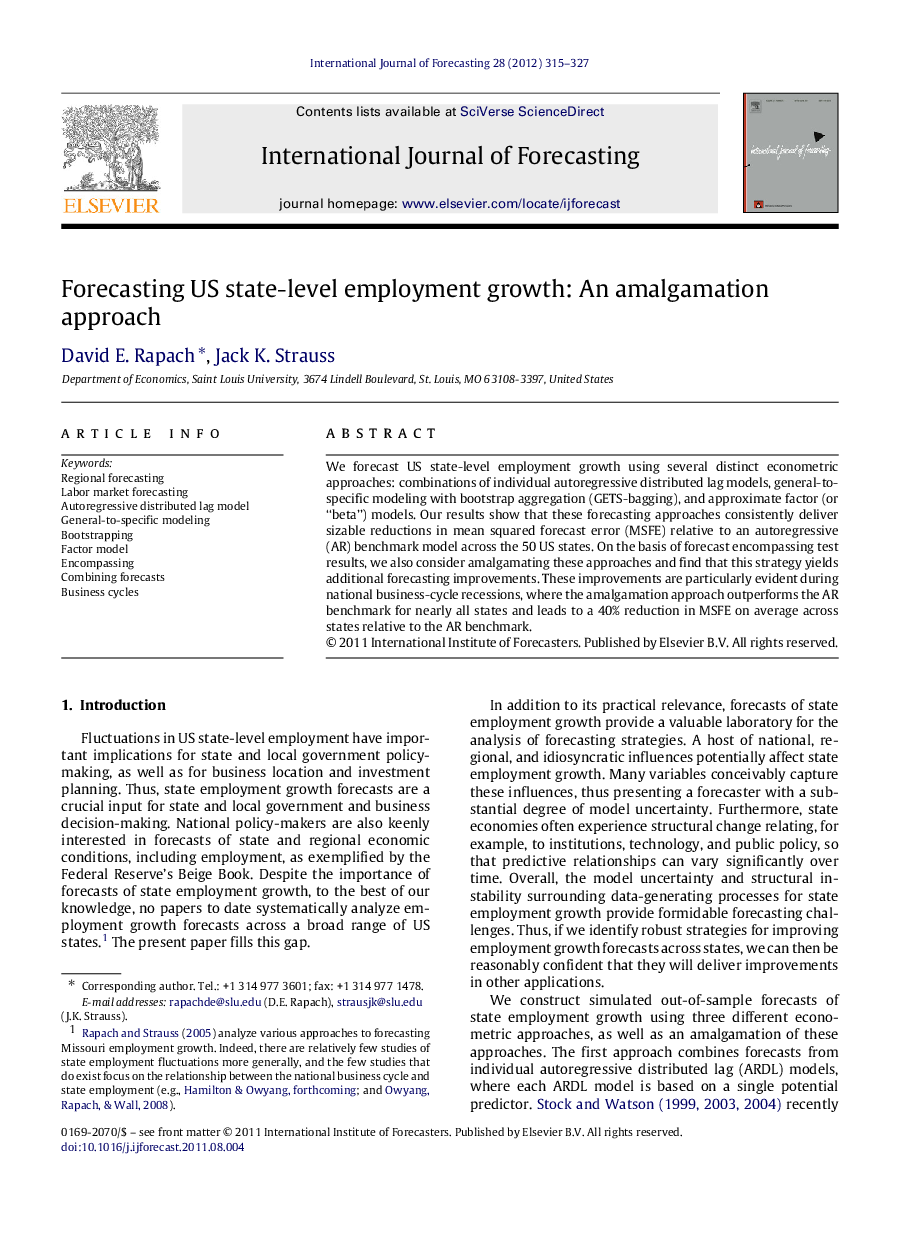| Article ID | Journal | Published Year | Pages | File Type |
|---|---|---|---|---|
| 997551 | International Journal of Forecasting | 2012 | 13 Pages |
We forecast US state-level employment growth using several distinct econometric approaches: combinations of individual autoregressive distributed lag models, general-to-specific modeling with bootstrap aggregation (GETS-bagging), and approximate factor (or “beta”) models. Our results show that these forecasting approaches consistently deliver sizable reductions in mean squared forecast error (MSFE) relative to an autoregressive (AR) benchmark model across the 50 US states. On the basis of forecast encompassing test results, we also consider amalgamating these approaches and find that this strategy yields additional forecasting improvements. These improvements are particularly evident during national business-cycle recessions, where the amalgamation approach outperforms the AR benchmark for nearly all states and leads to a 40% reduction in MSFE on average across states relative to the AR benchmark.
